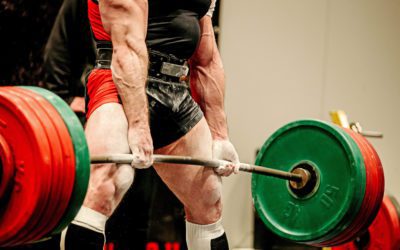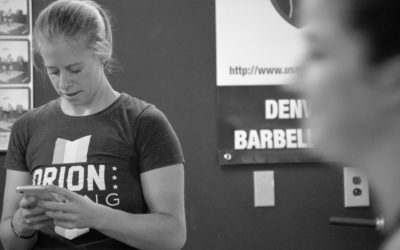Off-Season Training for High School Football: Developing Explosive Speed and Power
TOPIC: Speed & Agility | Sports Performance
This three-part series addresses the specific goals of each phase and how an effective high school level coach should program in order to provide their athletes with a comprehensive and effective off-season regimen.
In the first article, we discussed the first three months of your off-season program, from December to February. During this time your emphasis should be to recover from the season, lay the foundation for your off-season program, build strength, and develop the lifts and abilities you will shape your training around.
During the first training phase your goals should be the following…
- Recover from the season and go through a 2-3 week GPP Phase.
- Begin to build strength with a focus on the ‘Big Lifts’.
- Maintain a base level of conditioning.
- Perform some form of speed development.

Written By
ROB VAN VALKENBURGH
Rob Van Valkenburgh joins the TrainHeroic blog with 10 years of experience in the strength game. Having coached elite athletes in both the private sector and the Division 1 collegiate setting, Rob believes that strength has to be the foundation of all athletic movement and that athletes of all levels deserve a comprehensive strength program. Rob writes regularly on his website FootballStrengthCoach.com where he shares short-form articles, training tips & programs, and other items related to strength and performance for football.
Website
Narrow Your Focus to Speed and Power
Now, moving forward into the spring your training focus needs to narrow. As discussed, your program should progress through the off-season from general to specific. The first three months were very general in nature as you laid the foundation for the rest of the off-season and did most of your technical teaching.
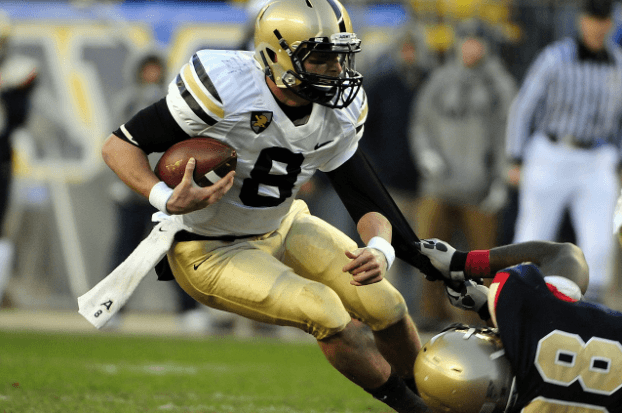
This second phase, from March to May, is critical and can be especially tricky with multi-sport athletes. That said, it is important to keep your athletes progressing through the program, getting them ready to hit the ground during the summer.
As we transition into this phase of training, our program will evolve in two ways:
- We will increase the volume and specificity of our speed and agility training.
- We will transition Phase 1’s strength gains into power and explosiveness.
Let’s dig into these with some detail…
Increase the Volumn and Specificity of Speed and Agility Training
During Phase 1 we focused on general speed and agility training with basic movement mechanics and our speed work built around combine testing drills. While we never remove movement mechanics work from our program, we will progress our sprint work and change of direction work into more advanced methods.
We will begin the implementation of resisted sprint movements with the use of sleds and partner resisted bands. As the athletes gain competency with the external resistance, we will mix in contrast speed work, which follows up a resisted sprint with an unresisted sprint.
This form of training produces a post activation potentiation effect and allows for the greatest amount of transfer from training to competition.
It is important to remember that speed development and strength conditioning are quite different demands on the body, and these should not be combined. If your athletes are fatigued during your technical speed training, they will not produce the results you want. I program my conditioning to directly follow my speed work, with an exception given to days that we do lower body training after our speed sessions — I do not want my athletes to be too run down going into the weight room.
During Phase 2 we will increase our movement work from two to three days per week.
Sample of Off-Season Daily Training Template For Speed and Agility
The daily split will be as follows…
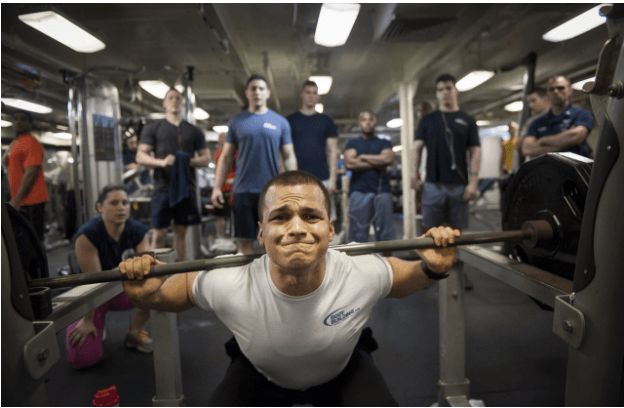
The most important aspect, in my opinion, is the COD and Reaction day. Make sure that the athletes are bought in and having fun with this. These days can be extremely beneficial, if all the athletes are paired up with someone who challenges them. Also, don’t be afraid to encourage a little trash talk. Remember, this is football not cross country.
Transition Strength Into Power and Explosiveness
In the first installment of this series, we spoke in depth about teaching the ‘Big Lifts’. By now, if done right, the team should be proficient in the 3-4 lifts you are building your strength program around. If so, it is time to begin dropping the reps and increasing the weight being lifted.
Disclaimer: Don’t increase the load just to increase the weight. Make sure the athlete is ready before you jack up the weight.
You will want to perform some form of max testing to establish 1RM’s. I personally prefer to test for the first time in the end of February rather than December. This gives you the chance to teach the lifts and allows the athletes a lower chance of injury because their training maturity is higher. Once you get 1RM’s on your big lifts you can begin to build your strength progressions from percentages.
By knowing the percentages the athletes have to lift each day, it takes the guesswork out of training and allows for progressive overload and a true training adaptation.
Remember: Percentages are nothing more than a guide. Don’t be afraid to adjust on the fly, mid-session, or change their max numbers to a more suitable weight.
I won’t go too far into set/reps, just know that each week your reps should drop and your percentages should go up. As this progresses pay close attention to the technique of each individual. If you see a breakdown in form or lack of stability make sure to assess the athlete and determine if they need a change in weight, increased stability/mobility work, or some corrective exercises.
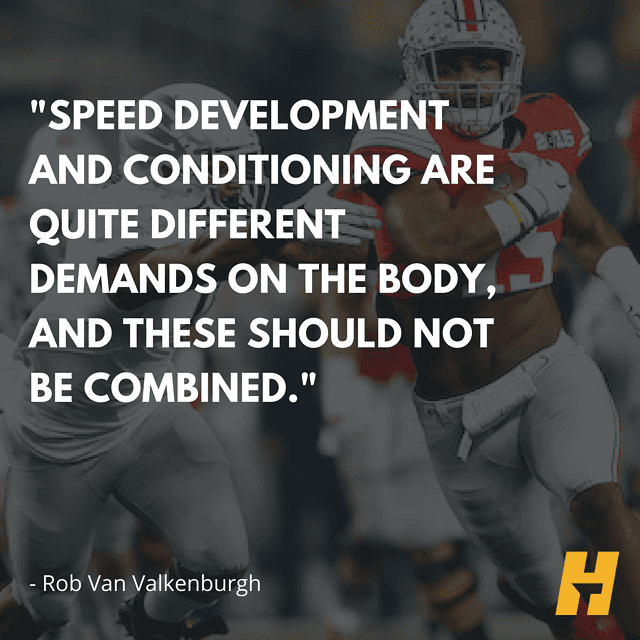
In order to develop power, the athletes need to be moving weight close to their one rep max for a low number of reps — and at a high rate of speed. Remember you are developing football players, not weight lifters, and they need the strength to cross over to the field. In order to do this they do not need slow ‘grind it out’ reps.
So, what does a weekly split look like in Phase 2?
I, personally, like to use a four day model with an off day on Wednesdays. This allows for two tough days followed by a recovery day and another two training days to finish out the week.
Here is my ideal weekly split…
- Monday: Linear Speed + Tempo Sprints, Upper Body Lift
- Tuesday: Lower Body Lift
- Thursday: Lateral Speed + Conditioning, Upper Body Lift
- Friday: COD Reaction + Competition, Lower Body Lift
Now, remember this is an ‘ideal world’ situation. You will have athletes in season (as they should be), but it is vital to keep them as involved as possible, so when you enter the summer you’ll hit the ground running.
Find Your Perfect Training Plan
Sometimes all you need to reach your destination on your fitness journey is an expert guide. Look no further, we've got you covered. Browse from thousands of programs for any goal and every type of athlete.
Try any programming subscription FREE for 7 days!
Related Articles
You May Also Like...
Nervous System Training 101: The Creation of Superhuman Strength and Athleticism
Most athletes train their muscles. The smart ones train their nervous system. If you want to move faster, lift heavier, and feel more explosive than ever, it’s time to go beyond brute strength. Nervous system training targets the real source of athletic power—your...
32 & Lifting: Reflections on My First Powerlifting Competition
Stepping onto the powerlifting platform at 32, just 13 months post-ACL surgery, Fred Ormerod chronicles his return to competitive sports after a 14-year hiatus. From shedding over 15kg to meet weight class requirements to confronting self-doubt and embracing the...
Effective Ways to Coach At-Home Athletes
Transitioning to remote coaching presents unique challenges for strength and conditioning coaches, especially when athletes lack access to standard gym equipment. Effective communication and creative programming are essential to maintain engagement and ensure athletes...
Nervous System Training 101: The Creation of Superhuman Strength and Athleticism
A whole book (or several) could be written about the idea of overloading the specific movements you are trying to improve in, but here is the key idea: The brain will generally wire movements towards efficiency rather than proficiency if allowed to do so.
32 & Lifting: Reflections on My First Powerlifting Competition
Stepping onto the powerlifting platform at 32, just 13 months post-ACL surgery, Fred Ormerod chronicles his return to competitive sports after a 14-year hiatus. From shedding over 15kg to meet weight class requirements to confronting self-doubt and embracing the...

Want more training content?
Subscribe
For Coaches
For Athletes
About
Support
Training Lab
Access the latest articles, reviews, and case studies from the top strength and conditioning minds in the TH Training Lab!
Made with love, sweat, protein isolate and hard work in Denver, CO
© 2024 TrainHeroic, Inc. All rights reserved.

